Strong Badass Women in Video Games of the 1980s and 1990s
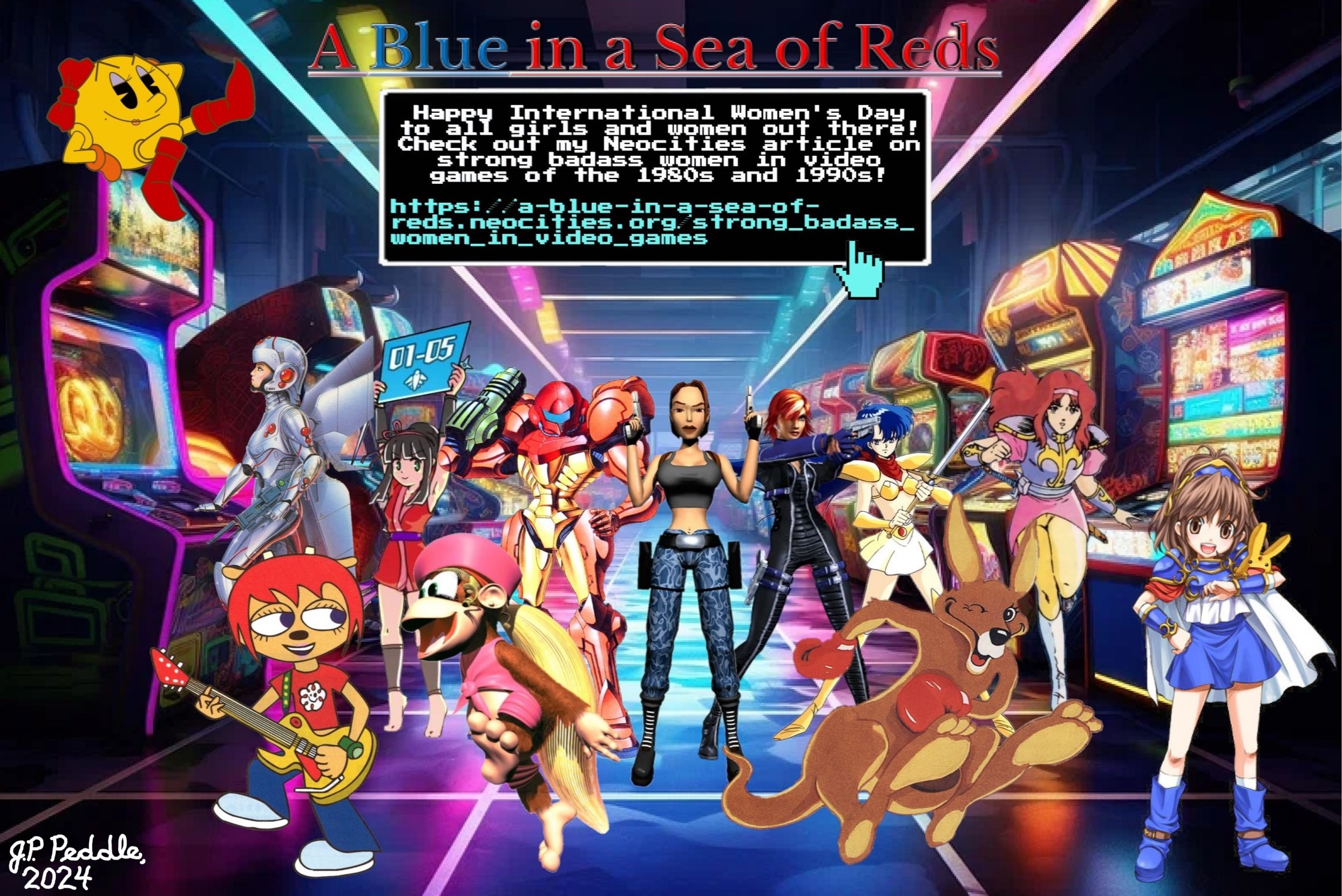
Happy International Women's Day 2024!
"If I have to, I can face anything. I am strong. I am invincible. I am woman." - Helen Reddy, I Am Woman
Today is International Women's Day, though you'd be forgiven for not knowing it. Any mention in the media is usually an afterthought. I've always wondered why more attention isn't paid to International Women's Day. After all, you don't hear about it nearly as much as other superficial holidays, such as Groundhog Day, for example. Here in Canada, International Women's Day isn't even a statutory holiday. In my view, this apparent lack of attention really sucks, considering the sacrifices and contributions girls and women make on a daily basis, as well as the violence and hardships many of them endure. All girls and women deserve to have access to education, career opportunities, and equal payment. They deserve as well to be recognized for their achievements, and to be free from discrimination, harassment, and violence. They also deserve to live in a world where they're never judged over their appearance or clothing choices. International Women's Day is an annual global reminder of all the above; let's make women's rights a reality everywhere.
Unfortunately, girls and women, both real and fictional, also face sexism and discrimination in the world of video games. I love gaming, though this is one aspect of the pastime I've never cared for. All players, designers, and characters deserve equal respect and freedom from harassment or bullying, regardless of their gender, skin colour, orientation, body type, disability, etc. So, in honour of International Women's Day, I'd like to explore twelve examples of strong badass women in video games of the 1980s and 1990s. Each of these female protagonists shattered the "damsel in distress" stereotype of their time and added new meaning to the phrase "you fight like a girl". Cyndi Lauper once sang, "When the working day is done, oh, girls, they wanna have fun. Oh, girls just wanna have fun." Well, what's more fun after work than relaxing at home with a good video game? Let's dive in...
Ms. Pac-Man, Ms. Pac-Man, General Computer Corporation, 1982
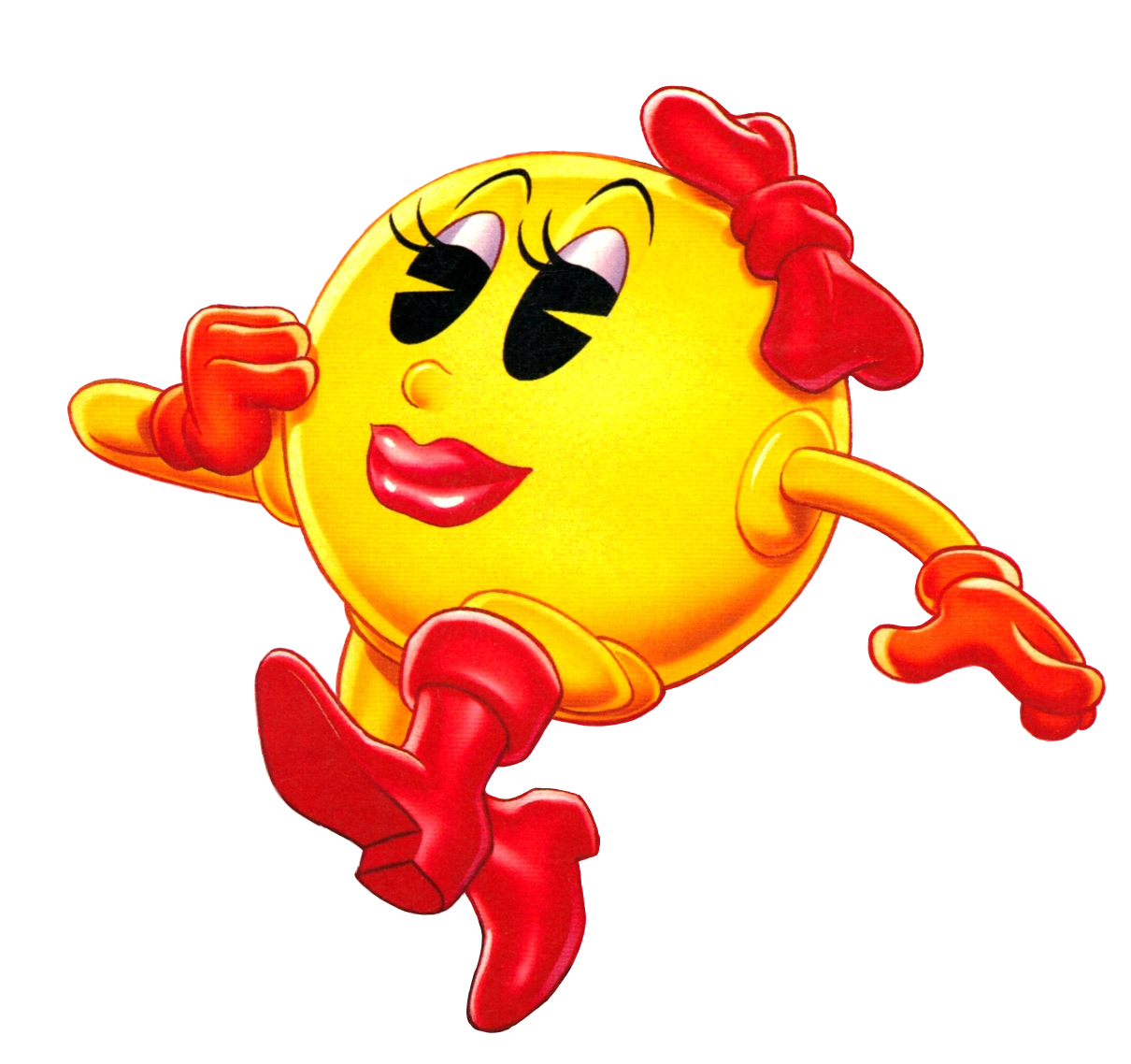
When the 1982 maze game, Ms. Pac-Man, arrived in arcades, it took everything great about the original Pac-Man formula and improved upon it, adding new mazes, giving the fruits mobility, and altering the ghosts attack patterns to increase the sequel's difficulty. Some console versions even include a two-player co-op mode, with Pac-Man as player 2. As for the titular protagonist, Ms. Pac-Man's voracious appetite matches that of her husband, so ghosts beware. Unfortunately, the legal rights to Ms. Pac-Man are a convoluted mess, involving General Computer Corporation, Midway, Namco, and AtGames. This is the reason why Namco has replaced Ms. Pac-Man with "Pac-Mom" in all their current Pac-Man games, and also why modern re-releases of Ms. Pac-Man are quite rare. It's an interesting story to be sure, so if you're curious to learn more, I advise looking it up on YouTube.
"K.O." Katy Kangaroo, Kangaroo, Sunsoft, 1982

There's no love stronger than the kind a mother feels for her child, and the 1982 platformer, Kangaroo, demonstrates this in its simple premise. The game centres around a pugilistic mother kangaroo at the city zoo, who's looking to beat the stuffing out of the mischievous gang of monkeys who kidnapped her joey. Armed with a pair of boxing gloves, the mother kangaroo won't rest until the monkeys are beaten to a pulp and her joey is safely back in her pouch. This game was popular enough to receive its own segment in the Saturday Supercade animated anthology series, in which the mother was named, "K.O." Katy Kangaroo, and her joey was aptly named, Joey Kangaroo.
Princess Kurumi, Ninja Princess, Sega, 1985

As with countless other video games throughout the years, the 1985 run-and-gun (run-and-shuriken?), Ninja Princess, kicks off with the abduction of the titular Princess Kurumi. However, rather than remain a damsel in distress, Princess Kurumi saves herself moments after her kidnapping, and spends the rest of the game kicking ass and taking names in a quest to regain her stolen kingdom (queendom?) from the ruthless usurper, Gyokuro. Unfortunately, when the game was released outside Japan, as Sega Ninja, Princess Kurumi was gender flipped into a generic male ninja on a quest...to rescue a princess.
Samus Aran, Metroid, Nintendo, 1986
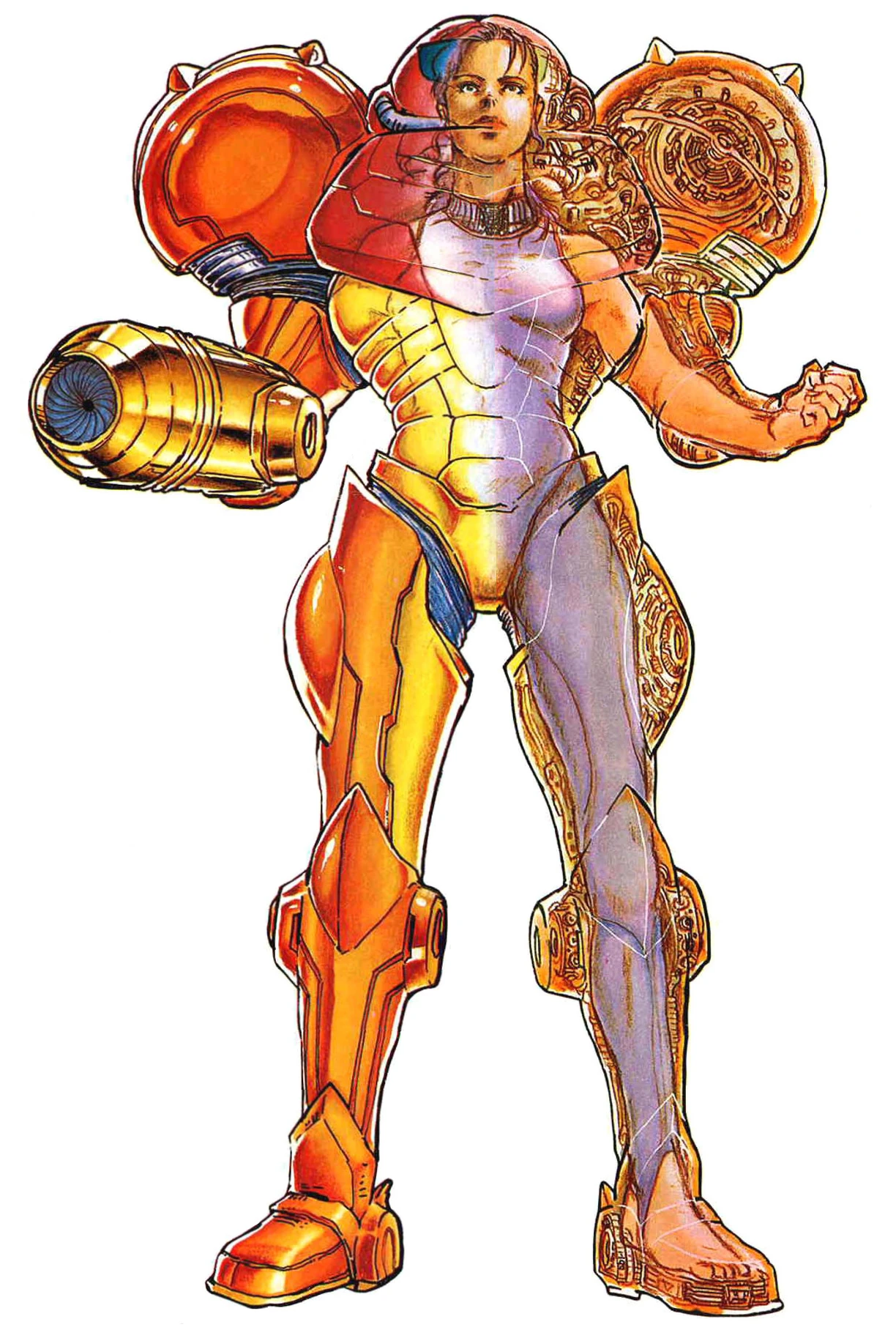
Throughout the entirety of the 1986 Alien-inspired action-adventure, Metroid, intergalactic bounty hunter, Samus Aran, wears a bulky, armoured space suit and helmet, while running, jumping, rolling, and blasting away extraterrestrial threats on hostile planet Zebes. Upon successful completion of the mission, Samus finally removes the helmet, revealing to gamers that the badass bounty hunter they were playing as was...a woman. It was such a memorable and awesome twist ending that subverted gender roles in gaming.
Alis Landale, Phantasy Star, Sega, 1987

The events of 1987 RPG classic, Phantasy Star, begin with interstellar teenager, Alis Landale, witnessing the murder of her big brother, Nero, a freedom fighter slain by the tyrannical King Lassic. Asking Nero's spirit to watch over and protect her from the great beyond, Alis swears vengeance on the evil king and his brutal regime. Throughout her journey, Alis assembles a team of fellow freedom fighters who join her cause to avenge Nero and restore peace to the Algo star system. Alis is a skilled swordswoman and strong leader who is ready to take on any threat.
Miria, The Guardian Legend, Compile, 1988

In 1988's The Guardian Legend, which is half action-adventure and half shoot-'em-up, players assume the role of Miria, a guardian robot tasked with obliterating the hostile planet Naju before it reaches Earth. To get the job done, Miria must battle evil aliens on both the ground and in the air. She does so by transforming between her android and starfighter forms. As such, the game is a unique hybrid experience, combining the best elements of two genres.
Arle Nadja, Puyo Puyo, Compile, 1991

Forget Dr. Robotnik and Kirby. The true star of the 1991 puzzle game, Puyo Puyo, is teenaged spellcaster, Arle Nadja, and her pet rabbit-like creature, Carbuncle. Both Arle's bark and her bite are equally dangerous, as she trash talks her bizarre opponents before burying them beneath an avalanche of googly-eyed jelly beans called Puyos. As a side note, Arle is also the protagonist of the 1989 dungeon crawler, Mado Monogatari.
Yuko Aso, Valis: The Fantasm Soldier, Wolf Team, 1991
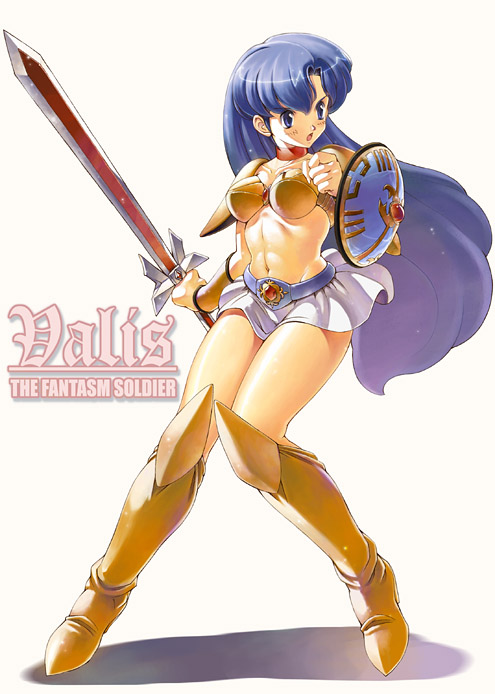
A remake of an earlier game of the same name, 1991 action-platformer, Valis: The Fantasm Soldier, begins with Japanese teenager, Yuko Aso, being attacked by otherworldly monsters outside her high school. She then receives a magic sword from goddess, Valia, and slices, dices, slides, and leaps her way through the streets and subway tunnels of Tokyo. Before long, Yuko finds herself transported to the fantasy world of Vecanti, where she's recruited by Valia to stop demon lord, Rogles. Yuko then undergoes a magical girl-like transformation, shedding her sailor fuku uniform for a metal bikini (who needs steel armour when you have abs of steel?), and becoming the mighty Valis warrior. Imagine experiencing all that on a school day.
Dixie Kong, Donkey Kong Country 3: Dixie Kong's Double Trouble!, Rare, 1996

Beginning her career in 1995 as second banana to her boyfriend, Diddy, it wouldn't take long for Dixie Kong to ascend to top banana in the 1996 platformer, Donkey Kong Country 3: Dixie Kong's Double Trouble!, a promotion well-deserved. Dixie is by far the coolest of the Kongs. When Donkey Kong and Diddy both go missing in the Canadian wilderness, she sets off to rescue them with her baby cousin, Kiddy, in tow. Dixie is always ready for action. She can rotate her ponytail like a helicopter to cautiously glide between enemies, over hazards, or across chasms to reach hidden bonus barrels. She can also use her ponytail to carry barrels above her head, shielding herself against enemies attempting to get the drop on her. Pity the fool who mistakes this chimp for a chump.
Lara Croft, Tomb Raider, Core Design, 1996
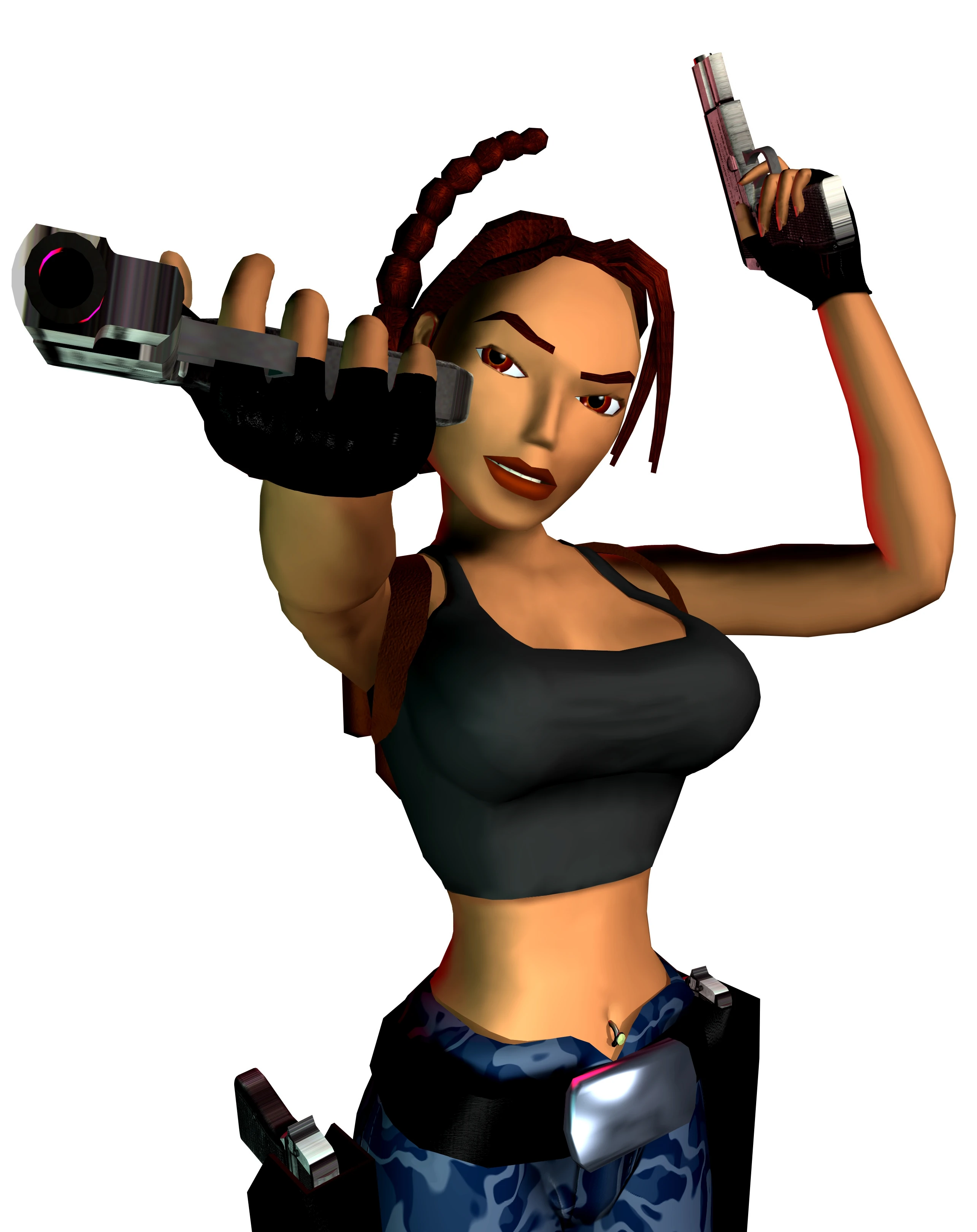
Making her debut in the 1996 action-adventure hit, Tomb Raider, Lara Croft was for the PlayStation generation what Pitfall Harry was for the Atari crowd: the de facto Indiana Jones copycats of their time. Nathan Drake, of Uncharted fame, was still in diapers when Lara was out there, performing stylish acrobatics, raiding tombs, and slaughtering wildlife. This globetrotting bad girl has cemented her place as a pop culture icon, receiving numerous sequels and reboots, as well as being portrayed in Hollywood movies by the likes of Angelina Jolie and Alicia Vikander, respectively.
Lammy, Um Jammer Lammy, NanaOn-Sha, 1999

The 1999 rhythm game, Um Jammer Lammy, is set over the course of one chaotic day in the life of titular shy sheep, Lammy, the left-handed lead guitarist of rock band, MilkCan. On this particular day, Lammy oversleeps, and finds herself running super late for her own concert. Most musicians would likely freak out in this scenario, but not Lammy. Nothing, not even death itself, or a trip to the afterlife, will keep Lammy from missing her show. Good thing, too, as Lammy's guitar skills are most excellent.
Joanna Dark, Perfect Dark, Rare, 2000
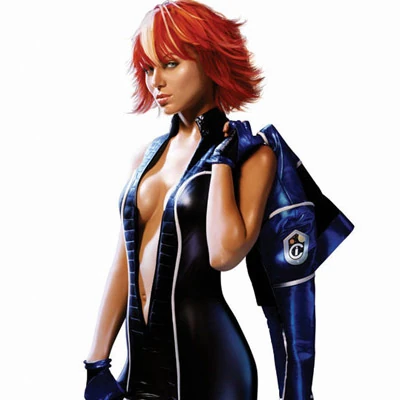
We bookend this list by coming full circle back to another game that also improved and expanded upon its predecessor. The 2000 first-person shooter, Perfect Dark, is the direct follow-up to 1997's mega hit, GoldenEye 007. No longer possessing the James Bond license, Rare steamed full speed ahead, anyway, replacing the suave male secret agent with Joanna Dark, an equally suave female secret agent, operating in a futuristic cyberpunk version of A.D. 2023. Joanna is every bit as capable and versatile as 007, gunning down enemies with her vast arsenal of high-tech weaponry and sidestepping their return fire. While the popular multiplayer deathmatch from the previous game returns, Perfect Dark takes things one step further by implementing multiplayer options into the main single player campaign, as well. Now, a second player can team up with Joanna to complete missions in a two-player co-op mode. However, if player 2 is feeling cheeky, they can instead assume the role of an enemy grunt and attempt to hamper Joanna's progress. This is a really cool game with an equally cool female protagonist.
That's it for now. I hope you enjoyed the read. In closing, to all girls and women out there, Happy International Women's Day! To all gamer girls (casual or hardcore), game on! And, to everybody reading, until next time, love, peace, and chicken grease!